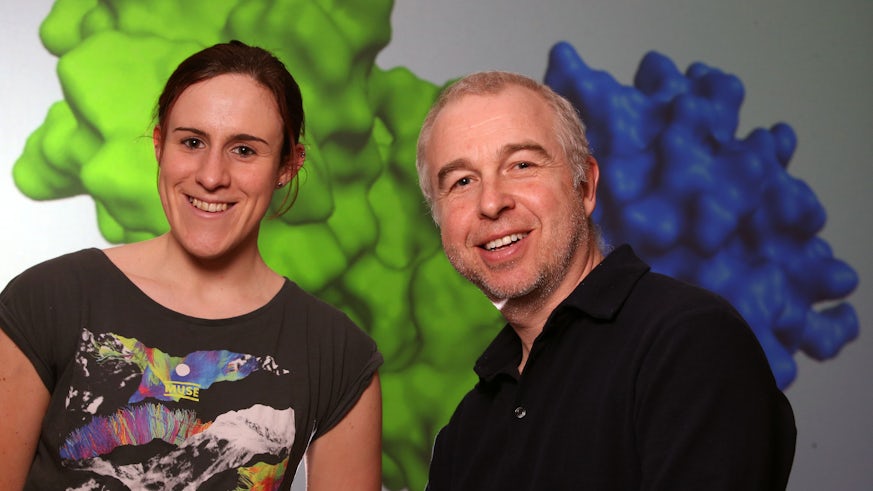Double Success leads to Institute’s First Cancer Stem Cell Agent
9 June 2015

When Olivia Hayward embarked on a PhD in drug discovery she never dreamed that she would replicate the successes of a predecessor who had discovered a novel anti-cancer agent. Yet just over two years into her PhD her research has led to the licensing of her novel compound to Tiziana Life Sciences and the expansion of the project to the preclinical development of a therapeutic agent for a range of cancer types.
Liv joined Dr Richard Clarkson's lab in 2012 to undertake a Masters in Research project.
"Liv had an infectious excitement for the discovery element of scientific research and it was obvious from an early stage that she had many of the attributes required for research," explains Dr Clarkson.
"When we were lucky enough to receive funding from Cancer Research Wales for a PhD project into a novel cancer therapeutic strategy, Liv was an obvious choice for the post."
Liv's project is based on one of the central strategic tenets of the Institute, the idea that only a fraction of any given tumour is capable of generating new tumours and is thus responsible for spread of tumours to new sites around the body (metastasis), disease relapse and resistance to conventional anti-cancer drugs. Targeting this small minority of the tumour's cells (termed cancer stem cells) could effectively cut off the tumour at its roots.
The project focusses on the role of a factor called cFLIP, which is present in many cells of the body and prevents cells from 'committing suicide'. Clarkson's lab had previously shown that when this factor was suppressed, cancer cells became more sensitive to cancer killing drugs. Importantly they showed that the cancer stem cells were particularly sensitive to this therapeutic strategy. Liv's remit was to design a chemical inhibitor of cFLIP using state-of-the-art computer-aided modelling pioneered by co-supervisor Dr Andrea Brancale at the School of Pharmaceutical Sciences, to chemically synthesise various versions of the agent with the help of Dr Andrew Westwell, and then to test these agents in the laboratory using cell models of breast and other cancers.
This whole process is normally regarded to be a 10 year exercise. However a previous PhD student, Jitka Soukupova, had successfully completed a similar study against a different target factor, Bcl3, in just three years.
"This was totally unheard of," explains Liv. "To go from a computer generated model to a chemical entity that suppressed metastatic cancer in mouse models within three years was beyond all expectations." The Bcl3 project is now approaching clinical trials. "My expectation was to perhaps identify a chemical structure with some affinity to its target. In the end we once more identified a chemical inhibitor that effectively suppressed cFLIP and sensitised cancer stem cells to cytotoxic agents."
"State-of-the-art facilities and technologies, and the interaction between experts in their respective fields has been a successful cocktail," said Dr Clarkson, "and these advances are testament to hard work and application by two talented PhD students".
Dr Clarkson is optimistic that this tried and tested approach can be productive in the future, "…and perhaps our metaphorical lightning will strike for a third time?"
�0 �VT